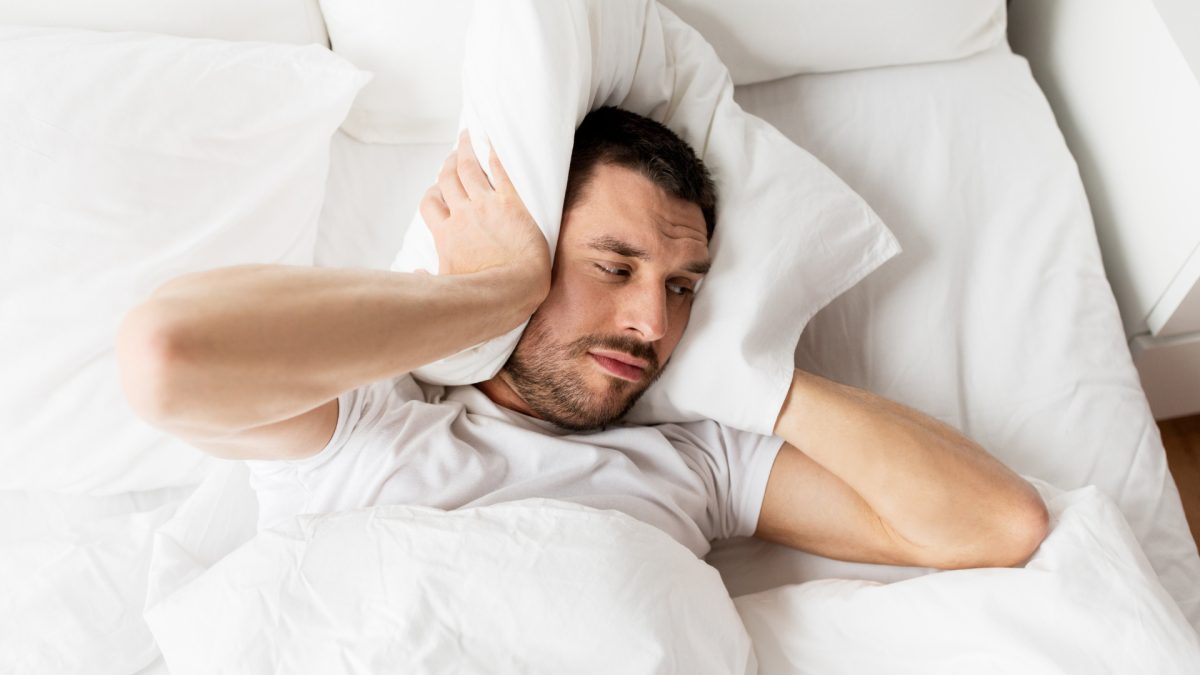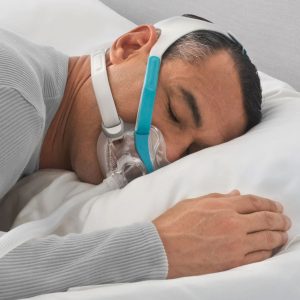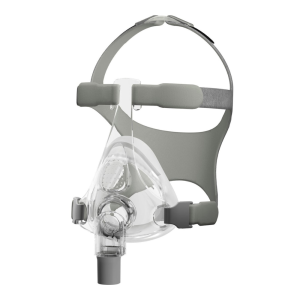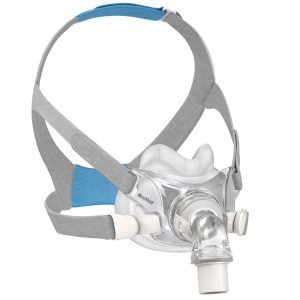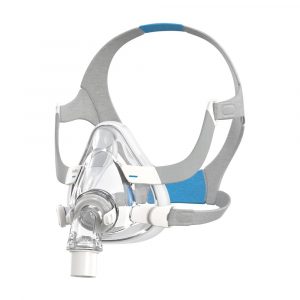Fact Checked
Intus Healthcare’s writers, customer service team, and sleep experts review and ensure this information is accurate.
Last updated on February 5th, 2024 at 01:12 pm
The most recommended and effective treatment for Obstructive Sleep Apnoea (OSA) is Continuous Positive Airway Pressure (CPAP) therapy, but new users of CPAP often ask, are CPAP machines noisy?
This page will let you know how loud CPAP machines are and how to keep noise to a minimum.
Table of Contents
Can you get silent CPAP machines?
CPAP treatment includes a device, mask and tube that provides the user with a continuous flow of pressurised air. The pressurised air keeps the airway open and free from obstructions. The first CPAP (Continuous Positive Airway Pressure) machines were known to be loud, reaching around 70dB. A common worry for new users is if they can sleep with a device if it’s noisy.
The good news is many of the new CPAP machines created in the last ten years are much quieter than their predecessors. Your machine’s sound is best described as ‘continuous and comfortable white noise.’ The technology has developed over the years, and brands have evolved. Most CPAP machines reach around 30 decibels, similar to a whisper. Unless you are a very light sleeper, the sound that comes from the device should not interfere with your sleep.
If you’re new to CPAP therapy, you’ll be happy to know that most machines on the market are quiet.
Quiet CPAP machines
Are you looking for a new machine or unsure where to start your CPAP journey? Here are a few of the quietest CPAP machines on the market, from quietest to loudest:
- Loewenstein Prisma SmartPlus: The Prisma device is quickly becoming one of our popular machines due to its simple interface and various comfort features. The device reached just 25dB, making it one of the quietest machines available.
- Philips DreamStation Auto: The DreamStation is a sleek white machine that features advanced therapy technology. The device reaches 25.8 dB and can also be paired with the DreamStation humidifier for enhanced therapy comfort.
- ResMed AirSense 10 Auto: ResMed is one of the most popular CPAP brands. The AirSense 10 is a great companion for first-time and current therapy users. The machine uses a whisper-quiet system, operating at just 26 dB. As well as being as quiet as a whisper, the device is simple to use with an intuitive automatic algorithm. The easy breathing system makes getting used to therapy simple. Add the myAir feature to view and manage your Sleep Apnoea treatment.
Please note: The latest ResMed AirSense 11 is currently unavailable in the UK.
- Fisher & Paykel SleepStyle Auto: F&P have featured the latest CPAP technology in the SleepStyle, listening to patient feedback throughout the design process. The device comes with an integrated humidifier and reaches 28 dB in frequency. The exhalation relief and SensAwake features make using the machine comfortable. This device also comes with an integrated humidifier.
Travel machine noise levels
Typically, travel machines are louder due to their smaller dimensions and, therefore, reduced soundproofing. Although they are slightly louder, they should not significantly impact your sleep.
- Portable ResMed AirMini Auto: This portable device uses ResMed’s whisper-quiet feature; at only 30db, travelling with CPAP is peaceful.
- BMC M1 Mini: The compact machine doesn’t look like a medical device at all. The stylish appearance is met with its quiet operation. At only 30dB, the M1 is ideal for taking on your travels.
Most CPAP machines have a two-year warranty; however, you should get around five years of use.
Still don’t know where to start? Contact us for guidance.
How to make your CPAP quieter
Although CPAP therapy is not entirely silent, it doesn’t compare to loud snoring.
You and your bed partner should not be kept awake by the noise of your device. Most machines have a ramp feature that can be set to gradually increase the pressure up to 45 minutes to make falling asleep easier and quieter.
Move your CPAP machine
If your CPAP machine is too loud, it could be because it’s too close to you. Some tubing can be short and make it hard to move your device further away, but try to use a tube no longer than 12ft, as this can reduce the quality of your therapy.
Place your machine on a flat surface like a bedside table, which will also help reduce noise. You could also place your device on a towel or book to reduce rumbling or grumbling sounds. Ensure you are not blocking the air intake area. If you find your device is still grumbling or shaking on the surface, you may need to try placing it on a heavier piece of furniture that is less hollow. Turning your device around can also help to improve the noise levels.
Check your comfort settings
The comfort settings of your device can impact the sound level of your therapy. For example, the Respiratory Relief settings cause the motor to switch between inhalation and exhalation pressure. As the motor increases and decreases in speed, it will change the noise. It may take time to adjust to new settings, but if the sound level does bother you, it just takes some perseverance.
Change your CPAP machine filters
Our customers often forget to change their machine filters; these need to be replaced regularly.
Your filters are there to prevent dust and dirt from reaching your airway, helping prevent infections.
Disposable filters must be changed monthly; otherwise, they can clog your machine and create noise. Reusable filters can be used for multiple months but do require regular cleaning.
Check your hose
- Consider a hose lift to get your tubing out of your way throughout the night and prevent tangling.
- If your hose makes noise, a hose fleece can help solve this and keep the air warm.
Clean your CPAP supplies
To make your device last as long as possible, regular cleaning is necessary to prevent dirt build-up from clogging your machine (increasing noise).
Check your humidifier
If you use a humidifier, you should only use distilled water to stop minerals from building up in the reservoir, causing it to be louder.
Remember to clean your humidifier chamber daily and always fill it with water before use. Failing to fill your humidifier with enough water will create loud noises as your device has to work harder
How to make your CPAP mask quieter
If your CPAP therapy is loud and making farting or whistling sounds, it could be down to your CPAP mask and not the device itself. Another sign of your mask being a problem is the exhalation ports of the mask blowing air into your bed partner’s face and creating noise. The most common cause of mask noise is an air leak, when the seal is not secure near the mouth, eyes or exhalation port.
Here are some tips to make your CPAP mask quieter:

Adjust your CPAP mask
If your CPAP mask is making whining noises and keeping you awake, you can do some things.
Adjust your mask to fit your face comfortably, and ensure no air leaks. Use a sizing guide to get the fit you need. At Intus Healthcare, we have a range of mask FitPacks; these come with various sizes included, so you don’t need to worry about using a sizing guide. Getting the best fit from your mask ultimately minimises air leaks and keeps noise to a minimum.
It is also important that you do not cover the exhalation port of your mask, as this is where the mask expels carbon dioxide.
Related page: How to be comfortable in your CPAP mask
Get the best CPAP mask for how you sleep
After a while, your CPAP mask will start to show wear and tear; after all, they aren’t meant to last forever. Your mask should accommodate how you breathe during the night; for example, if you only breathe through your nose, a nasal mask should be used. And if you breathe through your mouth, you should use a full-face mask. If you require a full face mask and find it too bulky, you can also try a hybrid mask, which provides a clearer field of vision and allows you to sleep on your side easily.
Your sleeping position can also impact how your mask fits; for example, sleeping on your side requires a mask that supports this. There are many types of masks and accessories that can help ensure you can sleep in your desired position comfortably.
Related page: CPAP masks for side sleepers
Clean your mask
Your CPAP mask’s lifespan depends on how often and thoroughly it is cleaned and maintained. A CPAP mask should last up to a year with proper maintenance and care.
Regularly cleaning your CPAP supplies is essential to get the most from your therapy and prevent discomfort. We recommend cleaning your mask with warm, soapy water every day to get rid of the bacteria. You could use the SoClean 2 CPAP sanitiser or CPAP mask wipes to make cleaning easier.
Replace mask parts
If your mask headgear, cushion, frame or tube needs replacing due to damage, you should replace it as soon as possible in order to prevent any pauses in treatment. If your mask cushion loses its grip due to wear it can cause air leaks and noise.
Replacing your mask parts can make your mask last longer and prevent purchasing a whole new mask.
Quiet CPAP masks
Here are some popular masks adapted for less noise:
Quiet full-face masks:
- ResMed AirFit F20 – Made with a QuietAir elbow to reduce noise by 89%, exhaled air leaves 70% gentler.
- ResMed AirFit F30 – Much like the F20, the F30 also uses the QuietAir diffuser to decrease noise.
- F&P Evora full-face – The new Evora is compact with breathable VentiCool technology and exhale vents that point down to prevent air from blowing in your partner’s face.
- F&P Simplus – Loved by many CPAP users because of its simple roll-fit feature and quiet nature.
- Phillips DreamWear full-face – Designed with a top-of-the-head tube connection to make sleeping in any position comfortable.
Quiet nasal masks:
- F&P Evora nasal – This new mask is designed with Cap-fit, 98% of patients found Evora easy to take on and off in the dark. Also, it features radial-air flow to minimise noise and draft.
- ResMed AiFit P10 – Part of the popular AirFit range, the P10 is 50% quieter and lighter than ResMed’s previous nasal pillows mask (Swift FX).
Take a look at our risk-free mask selection; each mask is guaranteed to fit. You have 28 days to get used to your mask, and if it doesn’t fit, you are entitled to a full refund.
More helpful tips
As well as adjusting your equipment, there are a few other things you can do to make falling asleep easier:
- Listen to white noise before you sleep: It is a mixture of various sounds at different frequencies that are audible to the human ear and can be used to help you fall asleep.
- Practice good sleep hygiene: Ensuring you have good sleeping habits makes it easier to relax at night and fall asleep.
Please do not hesitate to contact us if you need any help or advice.

